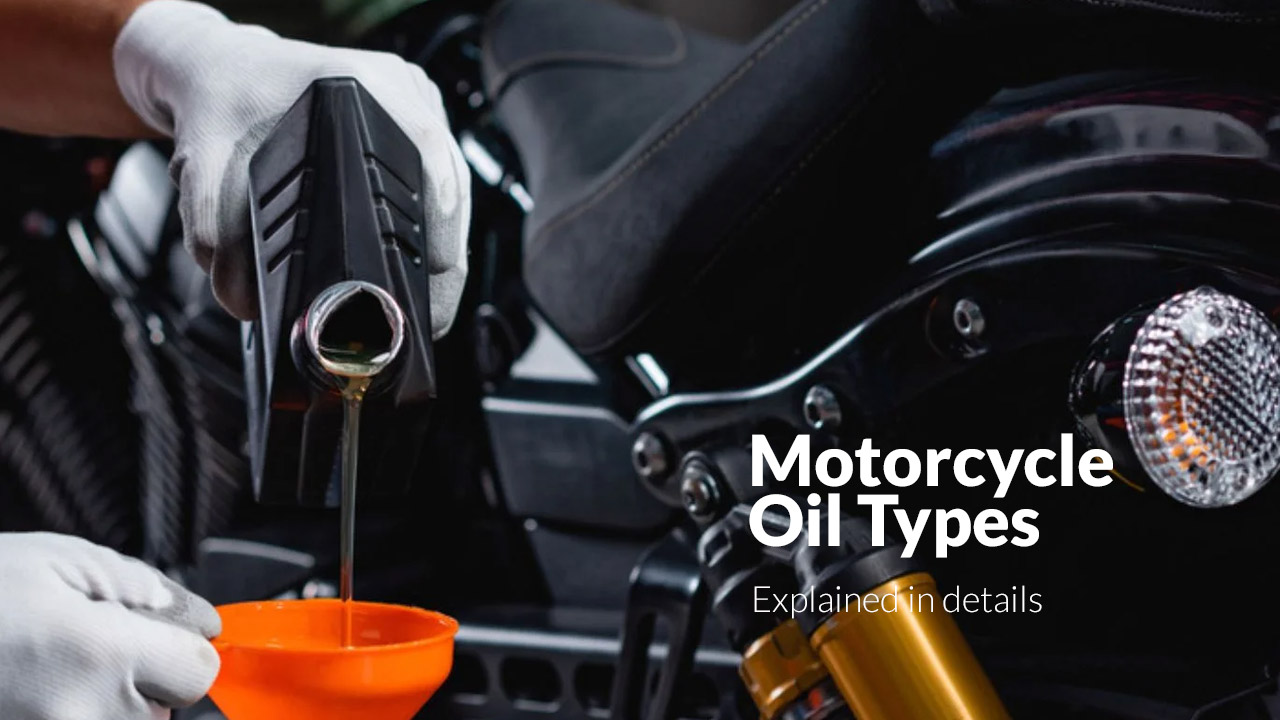Motorcycle oil types explained

Motorcycle Oil Types
Here are a few commonly used oil types for motorcycles and their characteristics.
Mineral oil
This is a basic, low-cost oil made from petroleum. It’s good for short rides and infrequent oil changes, but it breaks down quickly and needs to be replaced more frequently than other types of oil.
Synthetic oil
This oil is made artificially using chemical processes and is more expensive than mineral oil. It offers better protection for your engine, lasts longer, and performs better at high temperatures.
Semi-synthetic oil
As the name suggests, this oil is a blend of mineral and synthetic oils. It offers some of the benefits of both types, but at a lower cost than pure synthetic oil.
Racing oil
This oil is designed for high-performance motorcycles that operate at extremely high speeds and temperatures. It’s usually made from synthetic or semi-synthetic base oils and has a high viscosity to protect the engine under extreme conditions.
Motorcycle-specific oil
These oils are designed specifically for use in motorcycle engines and may contain special additives to protect against wear and tear. They may be mineral, synthetic, or semi-synthetic.
Motorcycle oil viscosities
Oil viscosity is a measure of an oil’s thickness or resistance to flow. It is typically measured in units of centipoise (cP) or centistokes (cSt). The higher the viscosity of an oil, the thicker it is and the slower it will flow.
Thin or low viscosity oil
This oil has a lower viscosity and is thinner than other types of oil. It is more suitable for use in hot weather and can help reduce friction and heat in the engine. However, it may not offer as much protection against wear and tear as thicker oils.
Medium or regular viscosity oil
This is the most common viscosity of oil and is suitable for use in most motorcycles. It offers a good balance of protection and performance and can be used in a wide range of temperatures.
Thick or high viscosity oil
This oil has a higher viscosity and is thicker than other types of oil. It is more suitable for use in cold weather and can help protect the engine from wear and tear. However, it may cause increased friction and heat in the engine, so it is not recommended for use in hot weather.
NB: It’s important to choose the right oil for your motorcycle based on the manufacturer’s recommendations and your riding habits. Using the wrong oil or failing to change your oil regularly can cause serious damage to your engine.


















